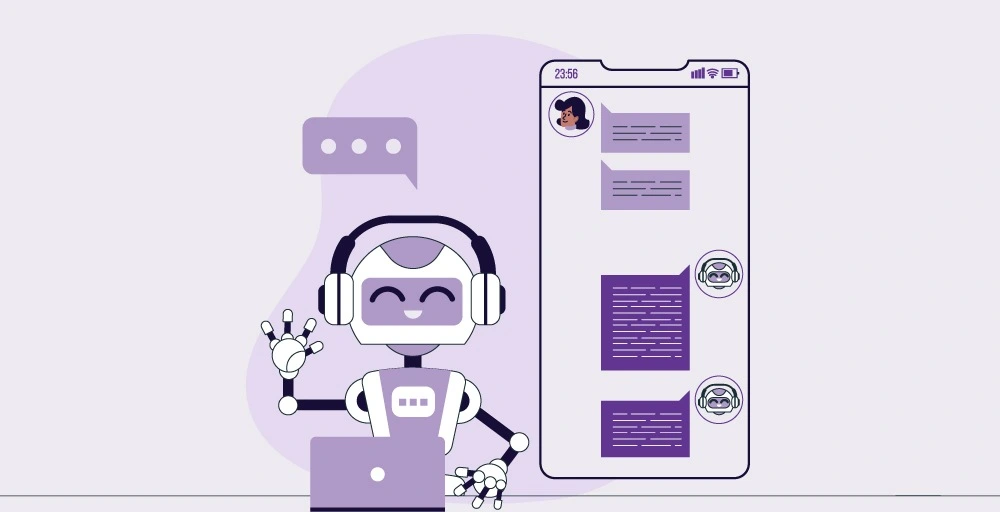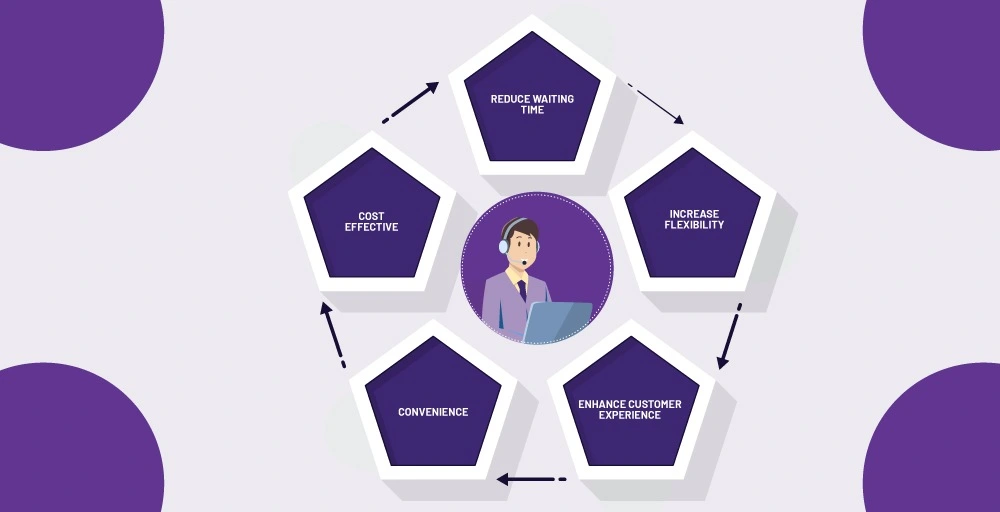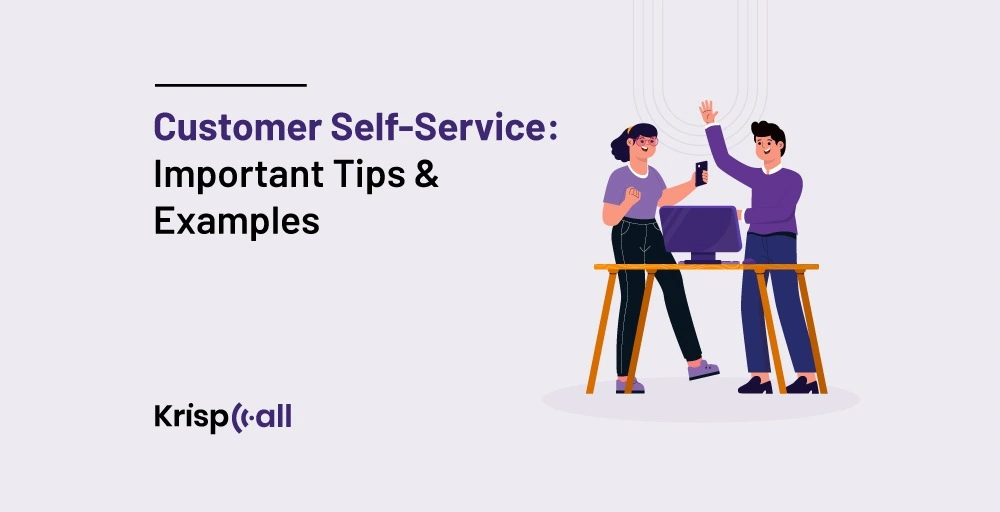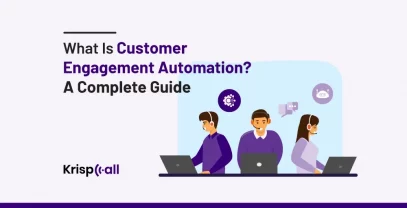In today’s fast-paced business environment, customers expect quick answers and solutions to their issues. Leaving them on hold when requesting support can frustrate them and create a bad impression 👎 of your brand.
Customer self-service is a reliable solution for delivering exceptional customer experiences at lower cost. Self-service helps customers gain knowledge and find answers to their questions independently without asking for help or waiting for customer service representatives.
Customer self-service systems in businesses can free up customer service staff’s workload and help them focus on complex issues, improving customer satisfaction 🙂, and performance efficiency.
Are you also ready to enhance your customer support and increase customer satisfaction? Let’s explore how self-service can transform your business.
🔑 KEY HIGHLIGHTS
- Customer self-service means doing any task completely without taking help from customer service representatives.
- Knowledge bases, chatbots, FAQ pages, mobile apps, and other forms of customer self-service are popular.
- Customer self-service is a cost-effective way to deliver exceptional customer experience.
- Some best tips for improving customer self-service options include understanding customers, investing in user-friendly technology, and providing multi-channel support.
What is Customer Self-Service?
Customer self-service is where customers independently complete any action or task without involving the company’s representative, i.e., agents or employees. This includes activities such as acquiring information and knowledge, making transactions online, solving issues, managing accounts, and many more.

Most commonly, it is found in customer support tools such as FAQs, support portals, chatbots, and IVR (Interactive Voice Responses). Businesses can use customer self-service systems to enhance the customer experience.
For example, KrispCall, a reliable cloud telephony service provider, has a well-structured FAQ page that answers questions related to various VoIP topics. This page has categories such as “General,” “Account,” “Pricing,” “Call Features,” “Trouble Shooting,” “Phone numbers”, etc. In each category, the user will find an answer related to that topic, simplifying navigation and improving the user experience.
Why is Customer Self-Service Necessary for Business?
Customer self-service is necessary for businesses for numerous reasons, such as improving customer experiences, reducing call wait time, and minimizing operational costs. It plays a vital role in meeting customers’ needs quickly and effectively.

Here are more detailed explanations of why customer self-service is necessary for business:
1. Reduce Cost
Having a customer self-service system in your business can reduce operational costs. Self-service systems let customers solve issues without involving customer service agents.
Also, offering more customer self-service options needs fewer customer support representatives or agents, saving hiring, staffing, and training costs.
The Gartner report says that a self-service interaction can cost 80 to 100 times less than a live interaction, even when there is just one step in resolving the issue.
2. Convenience
Customer self-service allows customers to access the information or support whenever they need it. It enables customers to manage and handle tasks like finding information, checking balances, managing accounts, making purchases, or solving issues.
A customer self-service system offers greater convenience to customers by eliminating the need for customer service representatives to solve their issues. It allows them to help themselves independently at their own place.
3. Enhance Customer Experience
Implementing a user-friendly customer self-service portal in businesses improves customer experience. Self-service helps customers get the information or guidance they want and reduces their dependency on a customer service representative.
Further, many customers are comfortable with technology and often find it more convenient than direct interactions. In fact, According to Research, 67% of customers prefer to resolve their issues themselves rather than speak with customer service, and 91% would use an online knowledge base if it were tailored to their needs.
By providing a self-service option, businesses can make customers feel appreciated and valued, fostering trust and loyalty towards the company.
4. Increase Agent Productivity
By empowering customers to resolve basic customer queries on their own, you free up support agents’ time for more complex inquiries.
Also, agents can spend more time improving customer service than handling endless email queues or jumping between phone calls. This helps increase the agents’ satisfaction by allowing them to use their skills in solving other issues.
5. Reduce Waiting Time
The customer self-service system can significantly reduce waiting time by providing 24/7 customer support. Customers can quickly access information and solve the issues themselves with a customer self-service system instead of waiting in queues for assistance.
Research indicates that 40% of today’s live customer service interactions could be effectively handled through self-service channels.
10 Best Tips to Improve Customer Self-Service
In today’s competitive business world, delivering exceptional customer self-service is essential for businesses to satisfy customers. Better self-service options can increase customer satisfaction and loyalty whether you’re a small or large-scale startup.
Here are 10 tips to improve customer self-service:
1. Understand Your Customers
Understanding your customer is key to offer effective self-service options. First, take time and understand your customer and their needs, preferences, struggles, journeys, and pain points.
With this information, you can offer self-service options according to the customer’s needs, demands, and preferences, directly enhancing customer satisfaction.
2. Continuous Improvement in Self-service
Customer satisfaction plays an important role in business success. However, customers’ expectations and demands constantly change.
So, continuous improvement is necessary to improve self-service options and maintain customer satisfaction.
3. Invest in User-Friendly Technology
You should design your self-service portal user-friendly to make the self-service process easy and effective for customers to use.
Technology may include chatbots, mobile apps, and IVR systems. These technologies should make it easy for customers to find the information or assistance they want without confusion.
4. Regular Update Your Content
Outdated content may confuse and frustrate customers in the self-service system. You should regularly update your content to reflect changes in your products.
To reflect product changes, you should periodically update your content, such as your knowledge base, troubleshooting guides, tutorials, and FAQs.
5. Provide Multi-Channel Support
Different customers prefer different communication channels. You should offer self-service options across multiple channels, such as websites, email, mobile apps, and social media.
This allows customers to select the most convenient channel for accessing self-service support and helps build trust and loyalty toward your company.
6. Collect Customer Feedback
You must collect customer feedback relating to their self-service experience to measure the effectiveness of self-service.
This customer feedback helps identify areas for improvement and make necessary changes to enhance the overall customer experience.
7. Offer Self-Help Resources
You should offer self-help resources to customers, such as FAQs, a knowledge base, troubleshooting guides, video tutorials, etc., to solve issues.
These resources provide quick answers to common questions, a visual demo, and detailed instructions for specific tasks, which can empower customers to solve issues independently.
8. Implement Live Chat Support
Implementing live chat support into the self-service portal can improve the customer experience. It offers real-time help or assistance to resolve the customer’s issues and queries.
It ensures that customers feel valued by the company and leads to a higher satisfaction level, which can improve trust in your company.
9. Personalize the Experience
You should offer relevant content, recommendations, and proactive support based on each customer’s needs and interests, using their data to personalize the experience.
It improves customer experience by meeting their needs and preferences. This leads to higher satisfaction levels and builds loyalty.
10. Measure Self-service Performance
It is important to measure the performance and effectiveness of the self-service option after it is implemented. The self-service portal should be easy to use and understand to enhance user experiences.
We need to keep checking how the self-service option is working and how it is helping customers gain knowledge and solve problems without asking for customer support.
Conclusion
Customer self-service helps businesses provide quick and easy support to their customers. It is a cost- and time-saving method that improves employee satisfaction and boosts a company’s productivity.
You can implement customer self-service in various ways, such as an IVR system, chatbots, knowledge bases, FAQs, mobile apps, etc. Effective customer self-service must be user-friendly, up-to-date, and supported in various channels.
FAQs
What are the challenges of customer self-service?
The challenges of customers self-service are:
- Users find it complex to use.
- Hard to encourage customers to adopt it.
- Need to maintain up-to-date and accurate information.
What are the key elements for an effective customer self-service strategy?
The key elements for an effective customer self-service strategy are:
- Continuous improvement
- Multichannel supports
- Personalized through customer feedback
- User-friendly interface
- Up-to-date contents
What are the future trends in customer self-service?
Future trends in customer self-service will involve further improvements in technology, AI-powered support, more personalization, automation, and voice and visual search bars.





